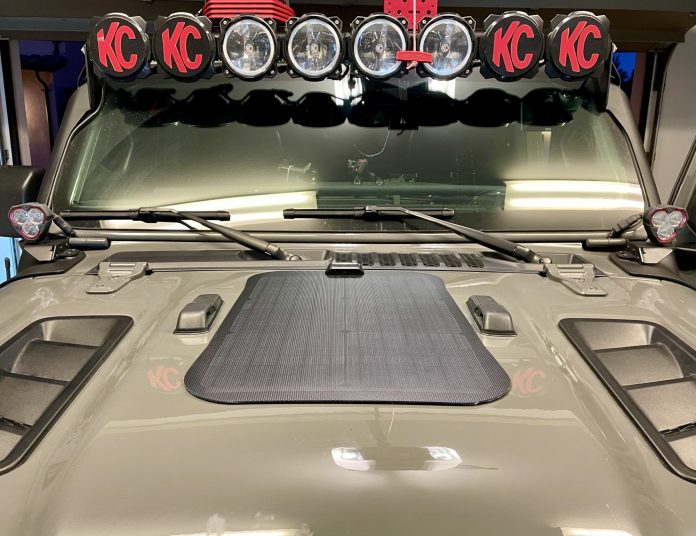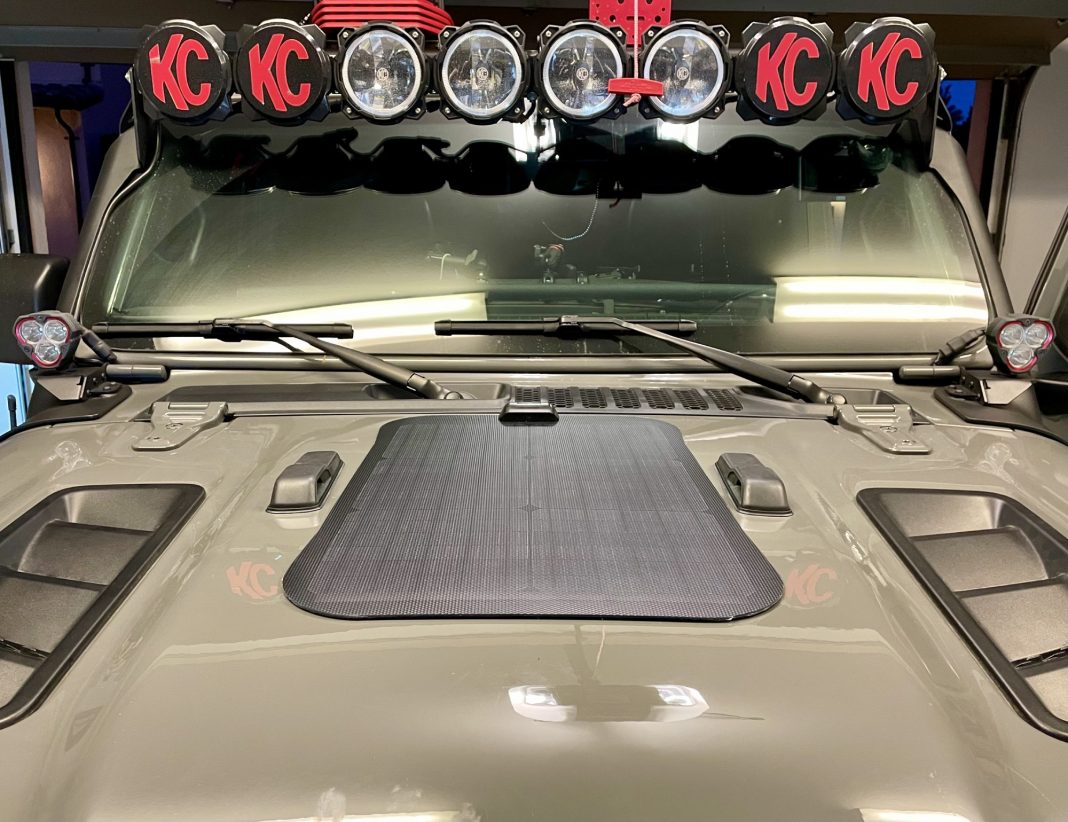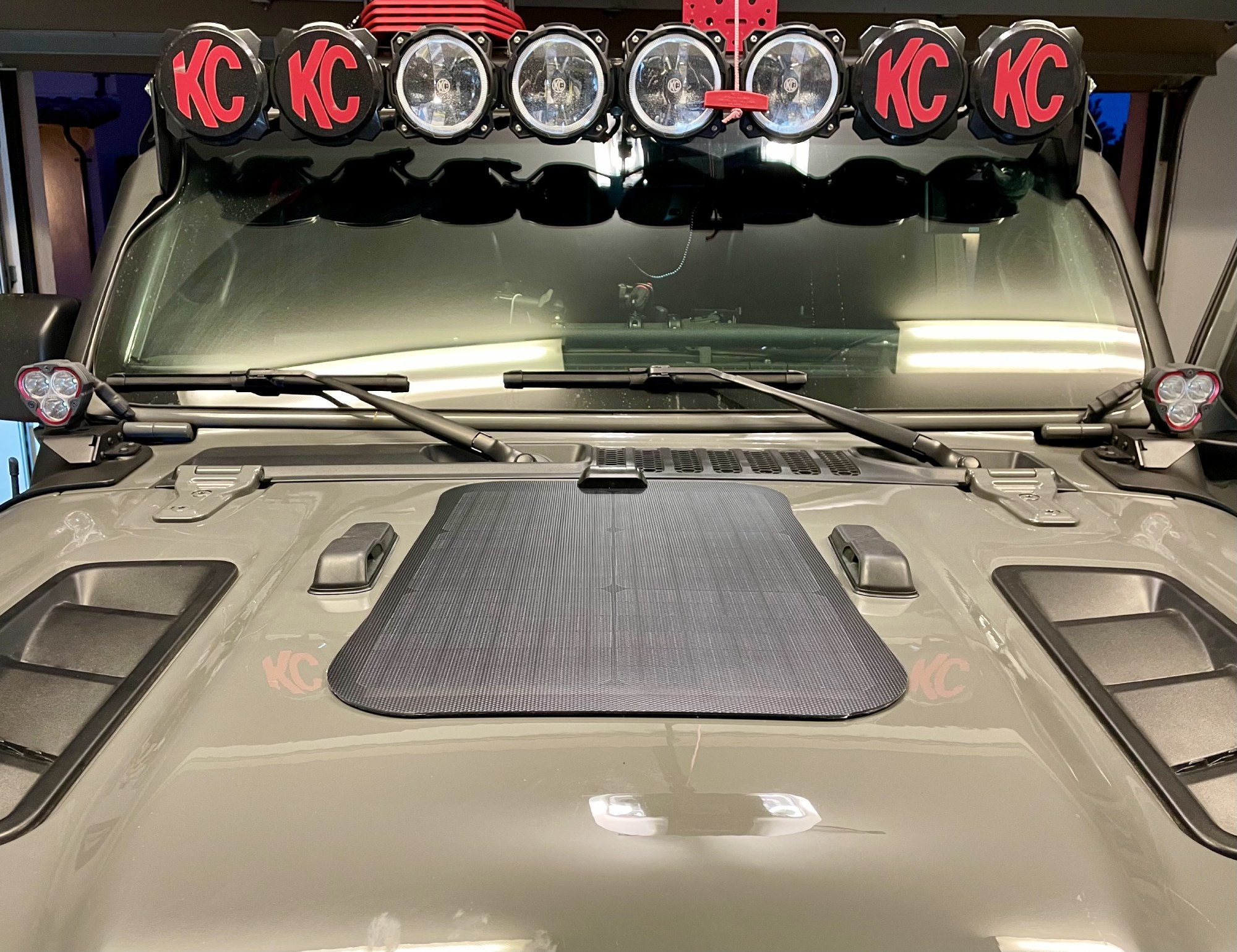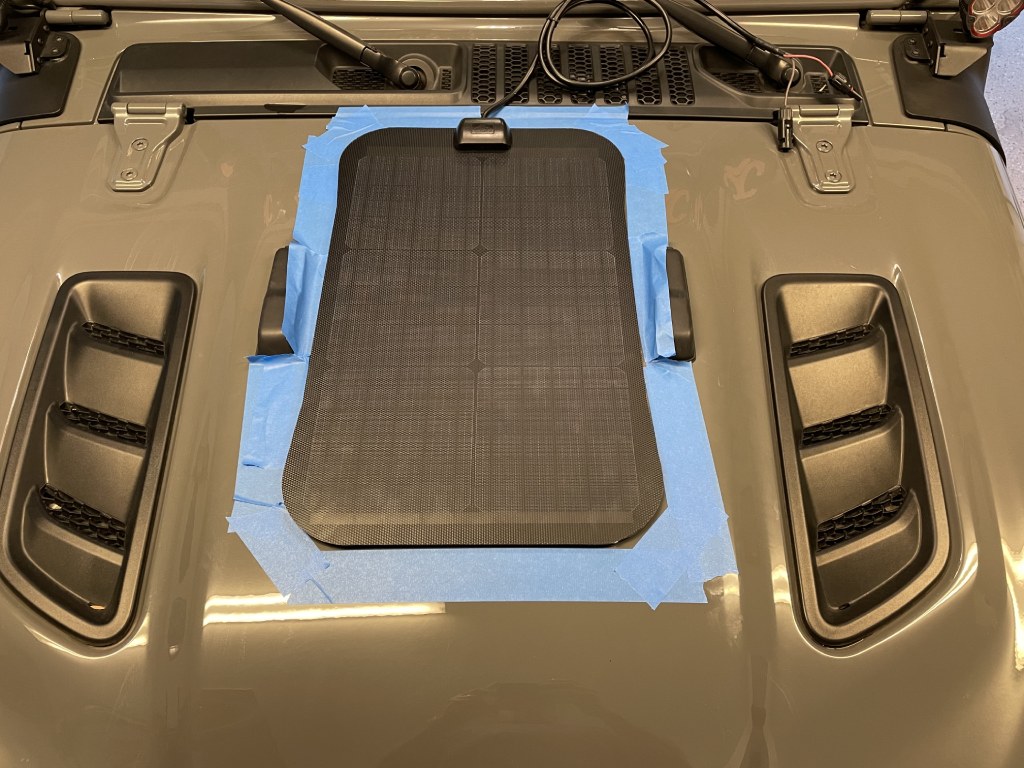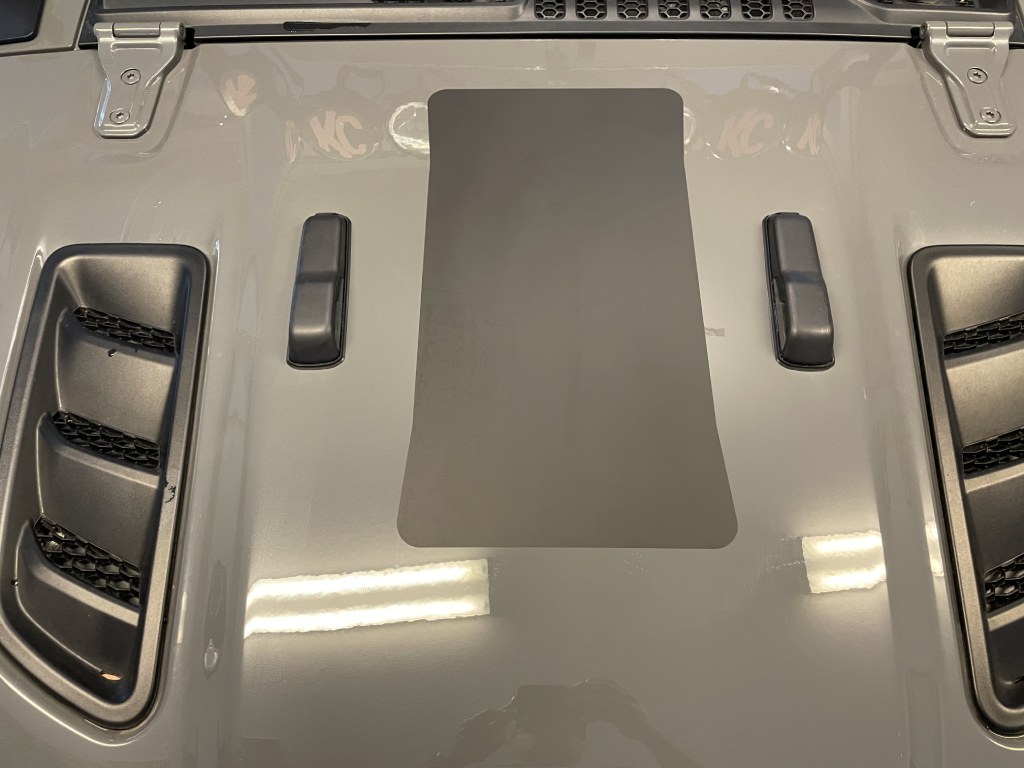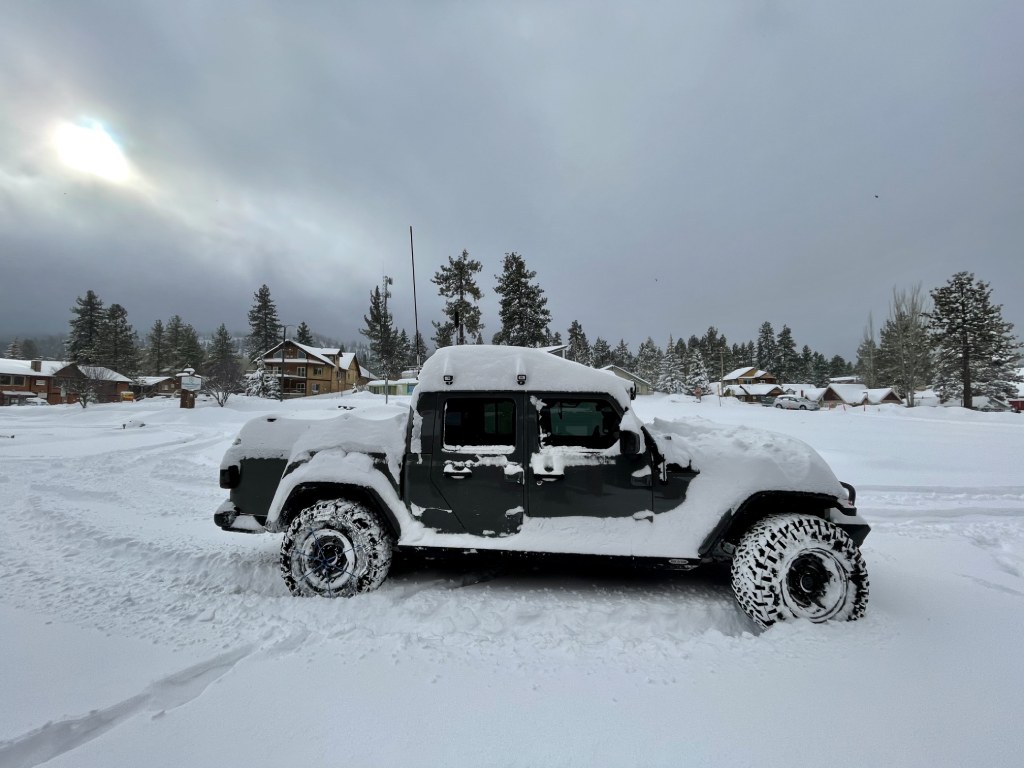I recently picked up a Cascadia 4×4 hood solar panel, and I have to say, this thing is very awesome.
I documented the process of installing the panel on my 2020 Jeep Gladiator in the video below. As you can see, the install was a breeze and the final product looks pretty dang good, if you ask me.
Now, you might recognize the name Cascadia 4×4…
They’re well-known for their winch accessories, but they’ve expanded their footprint into solar panels.
I know it might be a little concerning at first to buy a brand-new product from a company that hasn’t been making that product for very long, but let me put those fears to rest. Cascadia 4×4 has absolutely hit it out of the park with these panels.
Below is a quick review of the product and the installation process. Again, be sure to check out the video above for more details and to see the installation.
Cascadia 4×4 Hood Solar Panel Specs
I have a Jeep Gladiator Rubicon, so there are two hood vents that limit the size of the hood solar panel I can use. That meant getting the smallest 30-watt panel from Cascadia 4×4.
Here’s the specs on this bad boy:
- 8-layer laminate construction
- 3mm thick
- Optional plug-and-play MPPT solar charge controller
- Foam barrier to protect the vehicle’s paint
- Factory-like appearance
Let’s get to the nitty-gritty of some of these features and discuss them in more detail.
Cascadia 4×4 Hood Solar Panel Construction
The 8-layer laminate construction includes both fiberglass and high-tech polymers that give you a marine-grade panel with long-lasting durability. You can see the panel in the image above (during install, thus the blue painter’s tape I used to help me center the panel).
According to Cascadia 4×4, these panels will stand up to all sorts of harsh conditions, including rain, snow, ice, and mud. I’ve put my rig through all of those conditions since installing the solar panel, and I can attest to its durability in those situations.
The panel is also rated to resist damage from rocks, sticks, and other objects that might directly impact it while you’re on the trail. I have yet to have anything hit the panel directly, but when I was installing it, the strength of the panel (which is also a little flexible to help it flex as the vehicle moves) was plainly evident. I have no doubt it’ll stand up to the abuse of running on the trail.
If you’re heading off-road, you want well-made, durable products, and this solar panel has proven to be one such product thus far.
Cascadia 4×4 Hood Solar Panel Fit
These solar panels are vehicle specific. In fact, they’re called Vehicle Specific Solar Systems.
As I noted earlier, I have a Gladiator Rubicon, so there isn’t a ton of room for the panel between the two hood vents. But since the panel is specifically made for my vehicle, it fits like a glove. Above, you can see the vinyl base sheet that goes directly under the solar panel.
In fact, unless you know that I installed this thing, you might be fooled into thinking that the panel is an integrated, factory component. At just 3mm thick, it doesn’t awkwardly stand out, nor does it impact the smooth aerodynamics of my Jeep (LOL).
Part of the reason why it looks like a factory component is because you can get an optional custom cut vinyl base sheet that you put into place on the hood before mounting the panel. I found that this helped me get the panel positioned more precisely. Besides, the base sheet helps protect the hood paint from damage.
Likewise, there’s a 3M neoprene foam on the base of the panel that protects the paint even further. Again, this helps give the panel a custom-fit look that is sleek and seamless. This 3M foam also serves as a thermal barrier and helps improve cooling of the panel.
Learn More:
- First Impressions: KC Hilites Gravity Pro6 LED Light Bar
- 4WD Tools You Need for a Remote Multi-Day Adventure
Cascadia 4×4 Hood Solar Panel Installation
As you can see in my video at the beginning of this article, the installation of this panel couldn’t be easier. Cascadia 4×4 says you can install it in about one-and-a-half hours, and that estimate is spot-on.
You can watch the video to see each step in the installation process. But I want to point out a couple of things here regarding the installation.
First, get the optional plug-and-play MPPT solar charge controller. It controls how much electricity gets to the vehicle’s battery and serves as a line of defense against overcharging. The unit is waterproof, heat-resistant, and vibration-resistant, so it can withstand those rough-and-tumble off-road outings you have planned. And since it’s plug-and-play, it takes the guesswork out of wiring the panel.
Second, be sure you get your hood absolutely spotless before installing the panel. The panel attaches to the hood using 3M VHB tape, so it needs a clean, smooth surface in order to adhere correctly. Cascadia 4×4 takes the time to prepare each panel so that it is perfectly clean and smooth to enhance the tape’s ability to bond to it. You need to do the same with your vehicle’s hood.
Again, check out the video to see the complete install.
Cascadia 4×4 Hood Solar Panel Pros and Cons
When considering the very best features of this solar panel, the ease of installation has to be at the top of the list.
Even if you aren’t the handiest person in the world, you should be able to successfully install one of these panels and do so without spending an entire weekend doing it.
Another benefit of this kind of panel is that it gives you a redundant power source in case of emergencies. If my battery drains overnight, for example, this 30-watt panel will recharge the battery enough for me to turn the engine over in about 30 minutes.
And, I have to mention the aesthetics of the panel as a definite pro. It simply looks sensational, and as though it came with the truck. There’s no clunkiness to it at all – it is beautifully integrated into the overall look and feel of the truck.
Now, obviously there are some limits to what this panel can do. So if I have to put a con here, it would be that the panel won’t work when it’s buried under snow. This isn’t a problem with these solar panels specifically, but it’s something to think about if your adventures take you into the depths of a snowy winter. You’ll need to clean the panel off periodically so the snow doesn’t inhibit its ability to collect the sun’s rays.
In the end, I couldn’t be happier with this hood solar panel. Having the peace of mind of having a redundant power source is well worth the price of one of these things. Speaking of which, they’re reasonably priced, too, so in my book, Cascadia 4×4’s hood solar panels are the complete package!



